In situ forming poly(ethylene glycol)-based hydrogels via thiol-maleimide Michael-type addition
- PMID: 21548071
- PMCID: PMC4529490
- DOI: 10.1002/jbm.a.33106
In situ forming poly(ethylene glycol)-based hydrogels via thiol-maleimide Michael-type addition
Abstract
The incorporation of cells and sensitive compounds can be better facilitated without the presence of UV or other energy sources that are common in the formation of biomedical hydrogels such as poly(ethylene glycol) hydrogels. The formation of hydrogels by the step-growth polymerization of maleimide- and thiol-terminated poly(ethylene glycol) macromers via Michael-type addition is described. The effects of macromer concentration, pH, temperature, and the presence of biomolecule gelatin on gel formation were investigated. Reaction kinetics between maleimide and thiol functional groups were found to be rapid. Molecular weight increase over time was characterized via gel permeation chromatography during step-growth polymerization. Swelling and degradation results showed incorporating gelatin enhanced swelling and accelerated degradation. Increasing gelatin content resulted in the decreased storage modulus (G'). The in vitro release kinetics of fluorescein isothiocyanate (FITC)-labeled dextran from the resulting matrices demonstrated the potential in the development of novel in situ gel-forming drug delivery systems. Moreover, the resulting networks were minimally adhesive to primary human monocytes, fibroblasts, and keratinocytes thus providing an ideal platform for further biofunctionalizations to direct specific biological response.
Copyright © 2011 Wiley Periodicals, Inc.
Figures



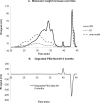
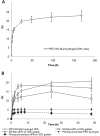


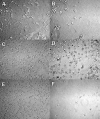
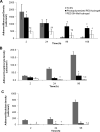

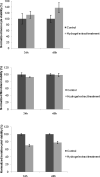
Similar articles
-
Thiol-ene-based biological/synthetic hybrid biomatrix for 3-D living cell culture.Acta Biomater. 2012 Jul;8(7):2504-16. doi: 10.1016/j.actbio.2012.03.049. Epub 2012 Apr 5. Acta Biomater. 2012. PMID: 22484717 Free PMC article.
-
PEG hydrogels formed by thiol-ene photo-click chemistry and their effect on the formation and recovery of insulin-secreting cell spheroids.Biomaterials. 2011 Dec;32(36):9685-95. doi: 10.1016/j.biomaterials.2011.08.083. Epub 2011 Sep 14. Biomaterials. 2011. PMID: 21924490 Free PMC article.
-
Injectable biodegradable hybrid hydrogels based on thiolated collagen and oligo(acryloyl carbonate)-poly(ethylene glycol)-oligo(acryloyl carbonate) copolymer for functional cardiac regeneration.Acta Biomater. 2015 Mar;15:55-64. doi: 10.1016/j.actbio.2014.12.016. Epub 2014 Dec 26. Acta Biomater. 2015. PMID: 25545323
-
Rapidly in situ forming adhesive hydrogel based on a PEG-maleimide modified polypeptide through Michael addition.J Mater Sci Mater Med. 2013 Oct;24(10):2277-86. doi: 10.1007/s10856-013-4987-1. J Mater Sci Mater Med. 2013. PMID: 23797826
-
Orthogonally Crosslinked Gelatin-Norbornene Hydrogels for Biomedical Applications.Macromol Biosci. 2024 Feb;24(2):e2300371. doi: 10.1002/mabi.202300371. Epub 2023 Oct 6. Macromol Biosci. 2024. PMID: 37748778 Free PMC article. Review.
Cited by
-
Thiol-Mediated Chemoselective Strategies for In Situ Formation of Hydrogels.Gels. 2018 Sep 2;4(3):72. doi: 10.3390/gels4030072. Gels. 2018. PMID: 30674848 Free PMC article. Review.
-
rhGALNS Enzyme Stability in Physiological Buffers: Implications for Sustained Release.Appl Biochem Biotechnol. 2025 Aug;197(8):5148-5167. doi: 10.1007/s12010-025-05266-5. Epub 2025 May 24. Appl Biochem Biotechnol. 2025. PMID: 40411664
-
Three-Dimensional Disassemblable Scaffolds for Breast Reconstruction.Polymers (Basel). 2025 Jul 25;17(15):2036. doi: 10.3390/polym17152036. Polymers (Basel). 2025. PMID: 40808084 Free PMC article. Review.
-
Maleimide cross-linked bioactive PEG hydrogel exhibits improved reaction kinetics and cross-linking for cell encapsulation and in situ delivery.Adv Mater. 2012 Jan 3;24(1):64-70, 2. doi: 10.1002/adma.201103574. Epub 2011 Dec 16. Adv Mater. 2012. PMID: 22174081 Free PMC article.
-
Metal-Free Click-Chemistry: A Powerful Tool for Fabricating Hydrogels for Biomedical Applications.Bioconjug Chem. 2024 Apr 17;35(4):433-452. doi: 10.1021/acs.bioconjchem.4c00003. Epub 2024 Mar 22. Bioconjug Chem. 2024. PMID: 38516745 Free PMC article. Review.
References
-
- Nguyen KT, West JL. Photopolymerizable hydrogels for tissue engineering applications. Biomaterials. 2002;23:4307–4314. - PubMed
-
- Wang ZC, Xu XD, Chen CS, Yun L, Song JC, Zhang XZ, Zhuo RX. In situ formation of thermosensitive PNIPAAm-based hydrogels by Michael-type addition reaction. ACS Appl Mater Interfaces. 2010;2:1009–1018. - PubMed
-
- Bae SJ, Suh JM, Sohn YS, Bae YH, Kim SW, Jeong B. Thermogelling poly(caprolactone-bethylene glycol-b-caprolactone) aqueous solutions. Macromolecules. 2005;38:5260–5265.
-
- Mather BD, Wiswanathan K, Miller KM, Long TE. Michael addition reactions in macromolecular design for emerging technologies. Prog Polym Sci. 2006;31:487–531.
-
- Chan JW, Hoyle CE, Lowe AB, Bowman M. Nucleophile-initiated thiol-Michael reactions: effect of organocatalyst, thiol, and ene. Macromolecules. 2010;43:6381–6388.
Publication types
MeSH terms
Substances
Grants and funding
LinkOut - more resources
Full Text Sources
Other Literature Sources

